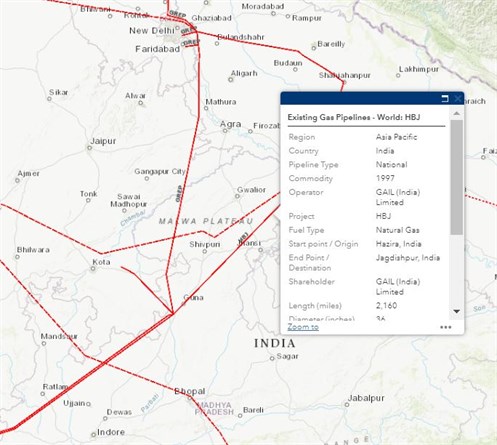India aims to split GAIL within a year to open up gas sector
MUMBAI/NEW DELHI, (Reuters) - India plans to split state-run gas utility GAIL by March next year to create two companies: one marketing gas, and another operating pipelines that can be used by consumers who buy direct from producers, the head of the sector's regulator told Reuters.
GAIL (India) Ltd is the country's biggest gas marketing and trading firm and owns most of the nation's pipelines, giving it a stranglehold on the market for the fuel.
By splitting GAIL, the regulator of India's oil and gas sector hopes to increase the number of gas consumers and attract the billions of dollars needed to expand the pipeline network and build more liquefied natural gas (LNG) terminals.
"All this un-bundling should be done within this fiscal year (to March 31, 2019)," D.K. Sarraf, chairman of India's Petroleum and Natural GasBoard, told Reuters.
GAIL already keeps separate accounts for its gas pipeline and marketing businesses, making it easier to split them into two entities before a change of ownership, he said.
Sarraf did not say which business GAIL would retain. India's Oil Minister Dharmendra Pradhan in January said the company should focus on laying pipelines, suggesting it is the marketing side that would be hived off.
By unbundling GAIL and opening the sector, the government hopes to increase gas use and meet its objective of raising the share of a cleaner, cheaper fuel as a part of the energy mix to 15 percent, from 6.2 percent, in the next 12 years.
Many power plants and small industries like ceramic, glass and cement makers rely heavily on more expensive or dirtier fuels such as naphtha, diesel and coal. In future, though, even small companies will be able to buy gas via pipelines, without having to go through GAIL.
Only a handful of companies - including Petronet LNG Ltd , Indian Oil Corp Ltd and Gujarat State Petroleum Corp - currently import and sellgas in India.
The gas regulator hopes by July, however, to draft norms for allowing end-users to bid for using LNG terminals to import gas.
"We are planning to put LNG terminals on public access to the extent of 20 percent," Sarraf said.
The regulator was also looking at how to open access to the pipeline network for smaller buyers.
India's gas demand is constrained by low domestic output, a small number of LNG terminals - just four - and a pipeline network that does not reach enough customers.
GAIL owns more than two-thirds of India's existing 15,000 km (940 miles) of pipelines, but the government wants to more than double the network to expand gas deliveries.
While the new pipeline company created by the division of GAIL would be expected to lead the way, the government also wants other companies to bid for rights to build and operate pipelines.
Three LNG import facilities are also under construction, and there are proposals for many more. Domestic gas production is also expected to rise.
Sarraf estimated an investment of nearly $20 billion would be needed over the next several years for laying pipelines.
Only the western state of Gujarat has an extensive city gas distribution network, though some other major cities, including New Delhi and Mumbai have been hooked up to gas. (Reporting by Promit Mukherjee in MUMBAI and Nidhi Verma in NEW DELHI; Editing by Simon Cameron-Moore and Tom Hogue)

- ExxonMobil halts 1-Bft3d blue hydrogen project in Texas
- Aramco and Yokogawa commission multiple autonomous control AI agents at Fadhili gas plant
- Ukraine will resume gas imports via Transbalkan route in November
- Mitsubishi to inject $260 MM into Brunei LNG project
- Freeport LNG (U.S.) on track to take in more natgas on Thursday after unit outage




Comments